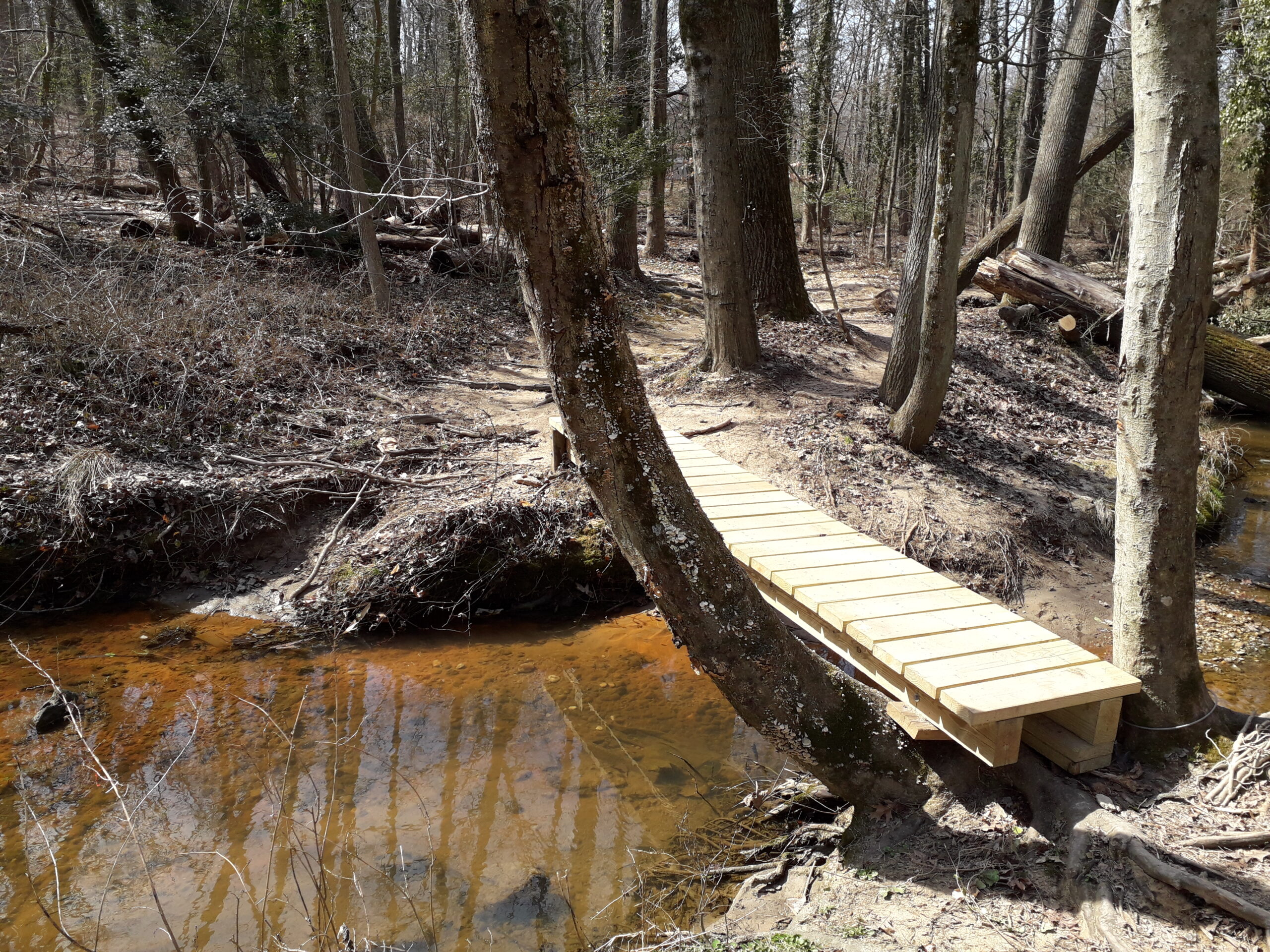An ATV park typically requires a minimum of 50 acres for sufficient space and diverse off-road trails. The size of an ATV park depends on various factors, including the number of trails, obstacles, and amenities desired to accommodate ATV enthusiasts and ensure a safe and enjoyable experience.
The larger the park, the greater the potential for offering a range of difficulty levels and activities. However, it is important to note that the required acreage may vary depending on factors such as local regulations, topography, and other considerations specific to the location of the park.
Factors That Influence Atv Park Size
Finding the right size for an ATV park depends on several factors. One of the main considerations is the type of ATV activities that will take place within the park. Different activities require different amounts of space, so it’s important to determine the specific activities that will be offered and plan accordingly.
The number of visitors per day is another factor to consider. The more visitors you expect, the larger the park will need to be to accommodate everyone comfortably. It’s essential to anticipate the peak visitor load and ensure there is enough space for everyone to enjoy their ATV experience.
The terrain and topography of the area also play a role in determining the required park size. Steep hills, rocky terrain, and dense vegetation can limit the usable space and affect the layout of the park. It’s crucial to assess the land’s characteristics and plan accordingly to provide a safe and enjoyable ATV experience.
Lastly, safety regulations and restrictions should be considered when determining the size of the ATV park. Local laws and regulations may impose certain requirements on the minimum acreage or distance between tracks and other facilities. Compliance with these regulations ensures the safety of visitors and the success of the park.
| Factors | Influence on ATV Park Size |
|---|---|
| Type of ATV activities | Depending on the specific activities, different amounts of space may be required. |
| Number of visitors per day | The park must be large enough to accommodate the peak visitor load comfortably. |
| Terrain and topography | Steep hills, rocky terrain, and dense vegetation can limit usable space. |
| Safety regulations and restrictions | Compliance with local regulations ensures the safety and success of the park. |

Credit: www.marylandmatters.org
Evaluating Available Land For Atv Parks
When evaluating available land for an ATV park, one of the important factors to consider is the land accessibility. The ideal location for an ATV park would be in an area with easy access to major roads and highways, allowing visitors to reach the park conveniently. Furthermore, it is crucial to assess the land characteristics such as its size, terrain, and vegetation. The land should be large enough to accommodate various trails and activities without causing overcrowding. Additionally, evaluating neighboring properties is necessary to ensure a compatible environment for an ATV park. Considerations should be made for noise levels, potential conflicts with nearby residents or businesses, and the availability of services and amenities in the vicinity.
Determining Space Requirements For Atv Riders
When planning an ATV park, it’s essential to accurately determine the space needed to accommodate riders. Average space requirements per rider can vary depending on factors such as riding style, activity type, and park layout. Here are some considerations to keep in mind:
Layout and trail design:
- Riders should have enough room to comfortably maneuver their ATVs.
- Consider including a variety of trail options to suit different skill levels and preferences.
- Ensure proper signage and markers to guide riders and avoid congestion.
Specific space requirements for different ATV activities:
| Activity Type | Space Requirement |
|---|---|
| Trail riding | Minimum of 5 acres per rider |
| Racing or track riding | Minimum of 10 acres per rider |
| Freestyle or trick riding | Minimum of 20 acres per rider |
By considering these factors and accurately assessing space requirements, you can create an ATV park that provides an enjoyable and safe riding experience for all enthusiasts.
Allocating Space For Non-Riding Amenities
When planning an ATV park, it is essential to allocate enough space for various non-riding amenities. These amenities cater to the needs and comfort of visitors, ensuring an enjoyable experience. Some key amenities to consider include:
| Parking areas for visitors: | Designate adequate space for parking vehicles, ensuring safety and convenience for ATV enthusiasts. |
| Restrooms and changing facilities: | Provide clean and accessible restrooms and changing facilities to enhance the comfort and convenience of riders. |
| Picnic areas and seating: | Include picnic areas and ample seating to allow visitors to relax, socialize, and enjoy their time at the park. |
| Concession stands and food courts: | Allocate space for concession stands and food courts to offer a variety of refreshments and snacks for hungry riders. |
These amenities not only enhance the overall experience but also attract more visitors to your ATV park. By providing well-planned and well-maintained amenities, you can create a space that caters to the diverse needs and preferences of ATV enthusiasts.
Accounting For Operational And Supporting Facilities
An ATV park requires adequate space to accommodate both operational and supporting facilities. These facilities are crucial for ensuring smooth operations and providing necessary services to visitors.
Administrative offices and maintenance buildings are essential for managing the park’s activities and conducting administrative tasks. They serve as command centers and provide space for personnel to carry out their duties.
Equipment storage and maintenance areas are necessary to house and maintain the ATVs and other equipment used in the park. These areas ensure the vehicles are in good condition and readily available for use by visitors.
Fueling stations and repair garages are required to provide uninterrupted access to fuel and facilitate prompt repairs when necessary. These facilities contribute to the efficient operation of the park and enhance visitor experience.
First aid and emergency response facilities are crucial for ensuring visitor safety. In case of accidents or medical emergencies, these facilities provide immediate assistance and contribute to a secure environment within the park.
Small-Scale Atv Parks (Under 10 Acres)
Small-scale ATV parks are ideal for local or beginner riders who are looking for a fun and accessible off-road experience. These parks, typically under 10 acres in size, offer a range of features and activities that cater to the needs of recreational ATV enthusiasts. Although small in scale, they provide an excellent opportunity to hone your riding skills in a controlled environment.
Some of the key features of small-scale ATV parks include well-maintained trails, obstacle courses, and even mini motocross tracks. These parks often have dedicated areas for different skill levels, allowing riders to progress at their own pace. With proper safety measures in place, small ATV parks offer a safe and enjoyable experience for riders of all ages.
An example of a successful small-scale ATV park is XYZ ATV Park, which covers an area of 5 acres. This park has received rave reviews from riders for its well-designed trails, challenging obstacles, and friendly staff. It serves as a great starting point for beginners and a popular destination for local riders looking to have some adrenaline-pumping fun.
Medium-Sized Atv Parks (10-50 Acres)
Medium-sized ATV parks, ranging from 10 to 50 acres in size, offer numerous advantages and features for outdoor enthusiasts. These parks are suitable for a moderate number of visitors, striking the right balance between space and capacity.
One case study of a medium-sized ATV park showcases how these parks provide an optimal experience. With enough acreage to accommodate various trails and recreational activities, visitors can enjoy a diverse range of terrains and challenges. The moderate size of these parks also allows for better management and maintenance, ensuring the safety and enjoyment of all riders.
Medium-sized ATV parks offer a harmonious blend of space and adventure, providing ample opportunities for riders to explore and enjoy their off-road experience. Visitors can embark on thrilling rides, encounter unique landscapes, and bond with fellow ATV enthusiasts.
Large-Scale Atv Parks (Over 50 Acres)
|
Large-Scale ATV Parks (over 50 acres)
ATV parks that span over 50 acres offer numerous benefits and amenities for visitors to enjoy. These parks are capable of accommodating large crowds, making them ideal for group events, competitions, and gatherings. |
Benefits and amenities of large-scale ATV parks
– Vast space for riding: With over 50 acres of land, large-scale ATV parks provide ample room for riders of all skill levels to explore and enjoy their ATV adventures. – Varied terrains: These parks often offer diverse terrains, including hills, trails, and mud pits, offering a thrilling experience for riders seeking different challenges. – Facilities and services: Amenities in large-scale ATV parks may include parking areas, restrooms, picnic areas, campgrounds, and even rental services for ATVs or equipment, ensuring convenience and comfort for visitors. Example of a popular large-scale ATV park One notable example of a thriving large-scale ATV park is “Adventure Offroad Park and Nature Center” located in Tennessee. Spanning over 500 acres, it offers a wide range of trails and terrains, adventure tours, camping facilities, and even scenic nature hikes for a complete outdoor experience. |
Frequently Asked Questions Of How Many Acres Do You Need For A Atv Park
How Many Acres Do You Need For An Atv Park?
An ATV park typically requires a minimum of 10 acres to provide enough space for trails, obstacles, and parking. However, the size may vary depending on the number of riders and the facilities you want to include. It’s essential to consider the local regulations and assess the needs of your target audience when determining the acreage for your ATV park.
What Are The Essential Features Of An Atv Park?
An ideal ATV park should have well-marked trails with varying difficulty levels, obstacle courses for riders to test their skills, ample parking areas, and restrooms. It’s also crucial to ensure proper safety measures are in place, such as proper signage, first aid stations, and trained staff.
Additionally, amenities like a picnic area or concession stands can enhance the overall experience for riders.
How Do You Design Atv Trails For A Park?
When designing ATV trails for a park, factors like terrain, soil condition, and natural obstacles should be considered. Aim to create a variety of trails with different difficulty levels to cater to riders of all skill levels. Proper signage, trail markings, and maintaining a sustainable trail system are also important.
Collaborating with experienced trail builders or enthusiasts can provide valuable insights and ensure optimal trail design.
Conclusion
Determining the necessary acreage for an ATV park depends on various factors such as the number of trails, amenities, and anticipated visitor capacity. Careful planning, taking into account safety regulations and environmental considerations, is essential for creating a successful ATV park.
By finding the right balance between providing ample space for riders’ enjoyment and ensuring the sustainability of the park, you can create a thrilling and sustainable ATV park experience.
